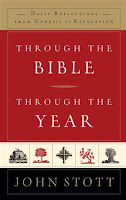"Woman-at-the-well" type scene
In an early post I discussed the importance of type-scenes in the Bible. I believe the most siginificant among them is the woman-at-the-well type scene, for it is always a betrothal scene - and remember the Bible is a nuptial book, beginning and ending with a wedding. There are two such scenes in the patriarchal narrative: Genesis 24 and 29. (Exodus two, recounting Moses and Zipporah is also such a scene as is Jesus and the Samaritan woman in John 4, but we will limit our comments to the Genesis accounts). The conventially fixed sequence of events are as follows: travel to foreign country, encounter there with the future bride at a well or spring, drawing of water, hurrying or running to bring the news of the strangers arrival and a feast at which the betrothal agreement is concluded. Variations on this sequence are important clues to a particular episodes contribution to the theology of redemption and marriage.
Isaac and Rebekah's betrothal scene in Genesis 24 is the most elaborate (until John 4 which has the most elaborate and theologically vital dialogue between bridegroom and future bride), full of detail and repitition. It is also the only version in which the bridgroom is not present for the courting, but rather a surrogate. It is also the only one where the young woman rather than the young man draws the water and acts heriocally - something of a foreshadowing of their future marriage. Isaac is the most passive of the patriarchs; Rebekah is the most resourceful of the matriarchs.
Jacob and Rachel's betrothal scene is more conventional up until the feast, when the betrothal agreement is concluded with a twist. At this point, Laban, the father of Rachel and Leah, tricks Jacob by giving him his older daughter Leah in the place of Rachel. Jacob works another seven years for Rachel and finds himself in a long tutelege of taking his own medicine. He is painfully discovering what Esau must have felt like after Jacob decieved him. The trickster is being tricked. A biblical theology of sanctification is embedded in these chapters.
Knowing this type scene, its conventions and variations, is critical in understanding the Gospels and - indeed - the Bible in its entirety as the one true story we all find ourselves in. My greatest and most enriching personal discovery in Bible study was this type-scene and its illumination of John 4, the whole of John's gospel, and indeed, the entirety of scripture. Thanks to Robert Alter's book The Art of Biblical Narrative that alerted me to it and to much else.
Remember we are learning to read the part in terms of the whole. But I am getting a bit ahead of myself. I guess I can't help it. I love this stuff.

No comments:
Post a Comment